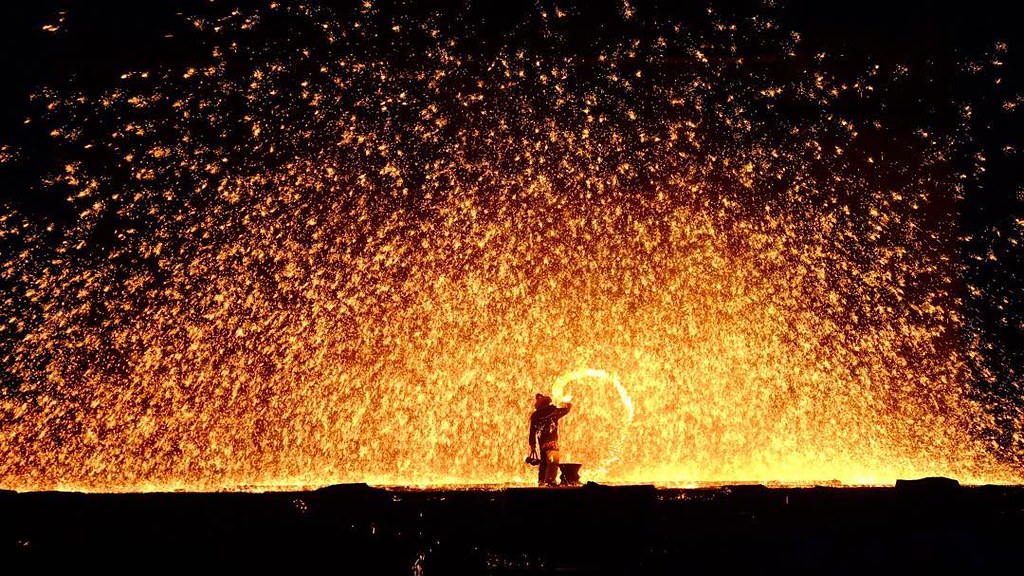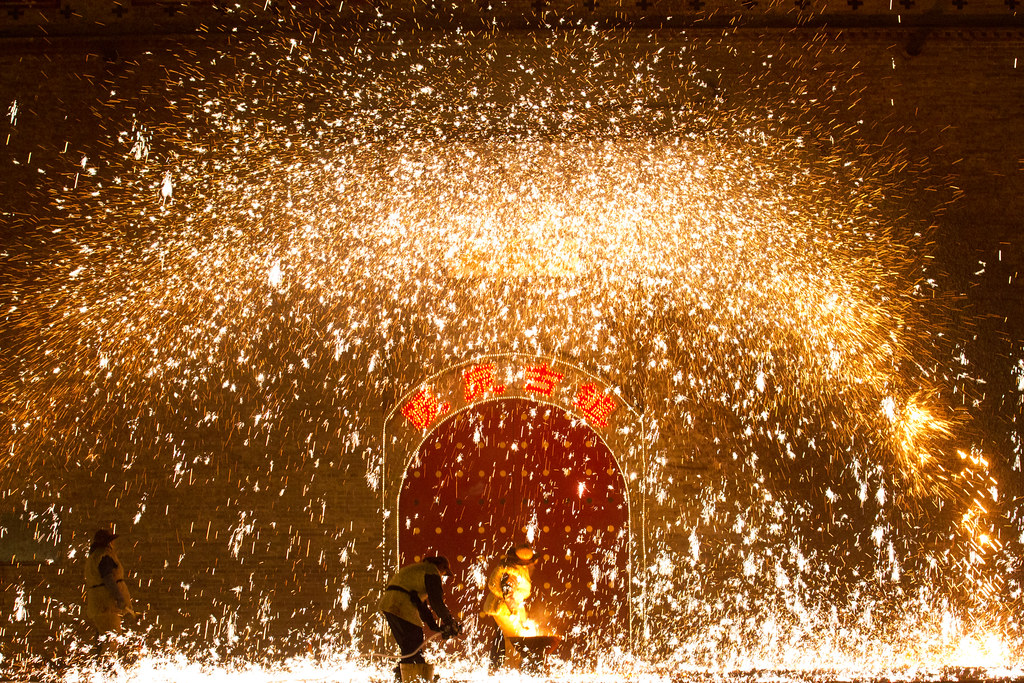For five centuries, the inhabitants of Nuanquan village in Yu County, in the northwestern reaches of Hebei province, China, have marked the Lunar New Year with a remarkable pyrotechnic tradition. Adorned in wide-brimmed straw hats and sheepskin jackets, local blacksmiths engage in a mesmerizing spectacle, flinging ladle after ladle of molten iron against a towering brick wall. Upon impact, the molten metal erupts into a spectacular cascade of sparks, reminiscent of a dazzling fireworks display.
This age-old ritual, known as Da Shuhua, translates directly to "beating down the tree flowers," a name inspired by the agricultural custom of striking fruit trees to encourage blossoming. The resulting fireworks mimic the graceful descent of flower petals.

The roots of this tradition trace back to the Ming dynasty, an era where fireworks symbolized opulence and were reserved for the elite. Nuanquan had a flourishing ironmaking industry fueled by weapons manufacturing, so the village was full of blacksmiths. These poor yet ingenious blacksmiths noticed that when molten iron dropped on the stone floor of the foundry, they produced a spectacle similar to fireworks. From this observation bloomed the idea for Da Shuhua.
As word spread, the economically disadvantaged in Nuanquan pooled together scrap iron, supplying it to the local blacksmiths to orchestrate Da Shuhua performances. This communal effort not only fostered a sense of revelry but also drew throngs of spectators, many of whom couldn't afford traditional fireworks. Thus, Da Shuhua became synonymous with Lunar New Year festivities in Nuanquan, where the affluent indulged in conventional fireworks while the less fortunate reveled in the mesmerizing displays of molten metal.
Initially Da Shuhua was conducted against the cold walls in Nuanquan. But as the population of the audience increased, it necessitated the construction of a dedicated venue – the "Tree Flower Square" – expressly tailored for Da Shuhua performances.
For each performance, approximately 500 kilograms of scrap iron are gathered and melted down in a furnace. To wield the searing liquid with precision, the performers rely on wooden spoons crafted from willow roots, soaked in water for days to prevent it from catching fire. Clad in thick sheepskin coats and straw hats, they brave the volatile environment, shielding themselves from the relentless onslaught of splashing molten iron, which can reach temperatures as high as 1,600 °C. Mastery of this ancient art demands not only skill but also experience, as the slightest misstep amidst the molten chaos can result in severe burns, despite precautions taken.
Recognizing the cultural and touristic value of Da Shuhua, the local government has taken strides to promote and preserve this time-honored tradition, enticing visitors from far and wide to partake in the Lunar New Year festivities. Moreover, Da Shuhua has earned prestigious recognition on the global stage, with UNESCO acknowledging it as a significant example of China's intangible cultural heritage. However, despite these efforts, the future of Da Shuhua hangs precariously in the balance, as the dwindling number of practitioners threatens its continuity.

















Comments
Post a Comment